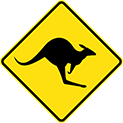In the world of dog breeds, there are those that stand out for their unique blend of intelligence, loyalty, and boundless energy. The Blue Heeler, formally known as the Australian Cattle Dog, is one such breed. Originating in the land Down Under, Blue Heelers have become beloved companions for families, ranchers, and active individuals alike. In this blog post, we’ll dive into the world of the Blue Heeler, exploring their history, characteristics, and what makes them a cherished breed among dog lovers.
1. A Brief History
The Blue Heeler’s story begins in the expansive Australian outback, where ranchers and cattle farmers needed a dog capable of herding livestock over vast distances in challenging conditions. The breed’s development involved crossing native Australian Dingoes with Collies, Dalmatians, and other European herding dogs. The result was a remarkable working dog that could endure the harsh Australian climate and terrain while displaying unmatched herding abilities. The breed was officially recognized as the Australian Cattle Dog by the American Kennel Club (AKC) in 1980.
2. Appearance
Blue Heelers are medium-sized dogs with a robust and well-muscled physique. They have a distinctive coat that comes in blue, blue mottled, or blue speckled variations, often with patches of black or tan. Their coat is dense and weather-resistant, providing protection in challenging environments.
What truly sets the Blue Heeler apart is their striking eyes. They typically have dark, expressive eyes, but their most distinguishing feature is the unique “heeler” name they carry. Blue Heelers are known for nipping at the heels of cattle to guide them, a trait that has earned them their name.
3. Temperament
Blue Heelers are renowned for their intelligence and unwavering loyalty to their families. They are incredibly alert, making them excellent watchdogs. While they can be reserved around strangers, they are known to be very protective of their loved ones.
These dogs are also highly energetic and thrive on physical and mental stimulation. They need regular exercise and mental challenges to keep their sharp minds engaged. Without sufficient activity, they can become bored and exhibit destructive behavior.
4. Trainability
Blue Heelers are among the most trainable of all dog breeds. Their intelligence and eagerness to please make them quick learners. They excel in various dog sports and activities, including obedience, agility, and herding trials.
However, their strong herding instincts can sometimes lead to herding behavior towards other pets or even children. Early socialization and consistent training are crucial to ensure they develop into well-behaved companions.
5. Work Ethic
The Blue Heeler’s strong work ethic is deeply ingrained in their DNA. They have a natural instinct for herding, and many individuals still work on farms and ranches today. These dogs have an unmatched ability to control livestock, making them invaluable assets to cattle farmers.
Even if they’re not working on a farm, Blue Heelers often seek out activities that allow them to use their herding skills. This can include games of fetch, agility courses, or even herding classes designed for dogs.
6. Exercise Needs
If you’re considering adding a Blue Heeler to your family, be prepared for a high-energy companion. These dogs require daily exercise to keep them happy and healthy. Long walks, runs, or playtime in a secure, fenced yard are all excellent ways to meet their exercise needs.
Mental stimulation is equally important. Puzzle toys, obedience training, and interactive games can help satisfy their need for mental challenges.
7. Health Considerations
Overall, Blue Heelers are a healthy breed with a lifespan of around 12 to 16 years. However, like all breeds, they are prone to certain health issues, including hip dysplasia and progressive retinal atrophy. Regular veterinary check-ups, a balanced diet, and an active lifestyle can contribute to their overall well-being.
8. The Ideal Family Dog
While Blue Heelers are renowned for their work ethic, they are also cherished as family pets. Their loyalty and protective nature make them excellent guardians, especially in homes with children. However, it’s essential to provide them with ample exercise and mental stimulation to ensure they remain well-adjusted companions.
These dogs thrive in active households where they can participate in family activities. They enjoy being included in hikes, runs, and outings, making them an excellent choice for adventurous families.
9. Adoption and Responsible Breeding
If you’re considering bringing a Blue Heeler into your life, there are two primary avenues to explore: adoption and responsible breeding.
Adoption is a wonderful option that allows you to provide a loving home to a dog in need. Many Blue Heelers end up in shelters or rescue organizations due to various circumstances. By adopting, you not only gain a loyal companion but also save a life.
If you choose to go the route of responsible breeding, it’s essential to work with reputable breeders who prioritize the health and well-being of their dogs. Ensure that the breeder follows ethical breeding practices and screens for potential genetic health issues.
Conclusion
In the world of canine companions, the Blue Heeler, or Australian Cattle Dog, stands out as a breed that offers intelligence, loyalty, and boundless energy. With a rich history rooted in herding and a modern role as a beloved family pet, these dogs have captured the hearts of many. Whether you’re a cattle rancher in the Australian outback or an active family looking for a devoted companion, the Blue Heeler could be the perfect addition to your life. Just be prepared to provide them with the exercise, mental stimulation, and love they need to thrive as your faithful friend.
